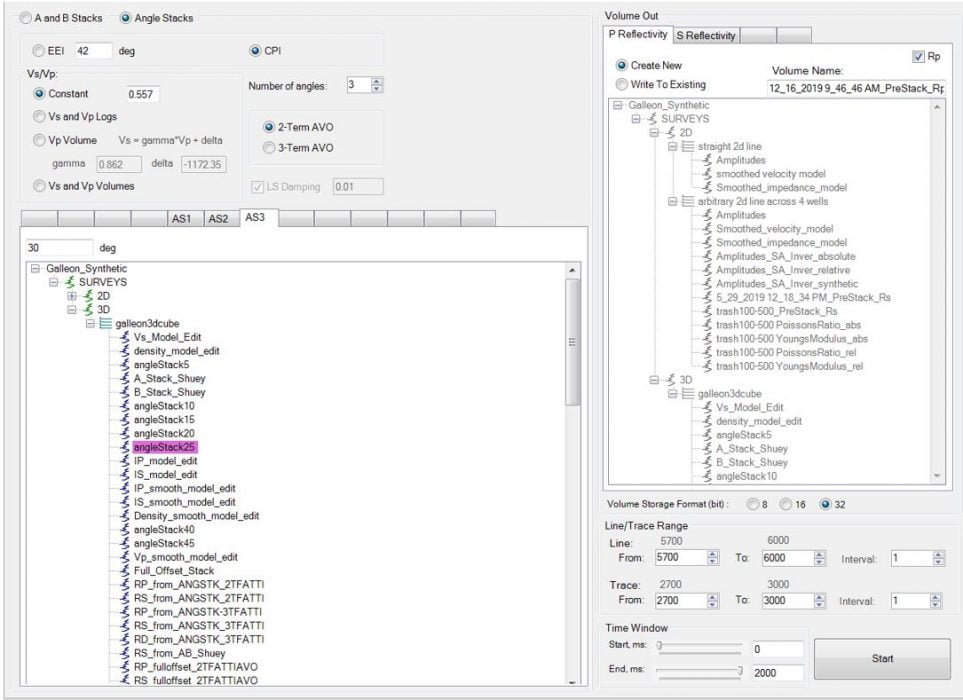
Pre-stack Inversion: Data Analyses
Once the prospect has been established using the previous tools– whether that be differentiating, for example, gas and fluid bearing sands in a conventional play, or highly ductile or brittle zones in an unconventional play, we then proceed to prepare data for the inversion.
This module takes Angle Stacks and performs AVO analysis to transform them into P, S and Density reflectivities.
Using available seismic data, two types of data sets can be generated – the EEI option generates EEI reflectivity data from given a CHI value. This volume can be inverted to elastic impedance.
The CPI (Cascaded pre-stack inversion) option generates P and S and density reflectivity data from angle stacks or from A and B stacks (also called intercept and gradient stacks). If A and B stacks are loaded as seismic volumes into the Kingdom project, these can be used.
The Vp/Vs ratio must be defined – this can be a constant (computed from the logs), or use the logs themselves, or define the Vp to Vs relationship via the mudrock formula, the values being defined from the cross-plot module. There is also the option to use a Vp and a Vs volume.

